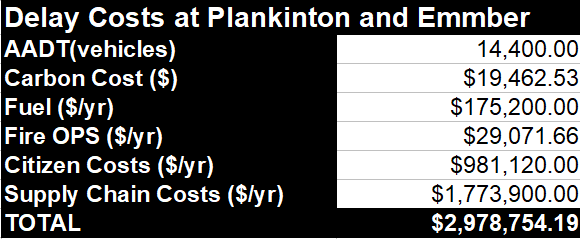Overview
Rail is still the most efficient and safe way to move freight. It is key to the supply chain in the US and one of the critical infrastructures that maintains the country. Cities grew up around rail lines and road traffic increased. Today some crossings pose a significant challenge to: Public Safety, Commerce, the Environment and People.
- Increase precious response time for Police, Firefighters and EMS
- Reduce chances of achieving positive outcomes in case of critical injuries
- Cause catastrophic derailments
Emergency crews currently lack advanced warning of occupied crossings, but there is an answer – Predictive Mobility: Systems that provide advance notification for emergency response dispatchers and drivers to avoid occupied crossings saving time and lives!
71% Of rail crossing deaths occur despite accepted safety measures*
94% Of drivers circumvent accepted safety features**
60% Of drivers have experienced delays of 20 minutes or more**
LinqThingz provides the most advanced technology using Predictive Mobility to help emergency responders save lives and property. Regional deployment of these systems means greater coverage and advanced warnings for first responders.
Predictive Mobility:
- Provides advanced notification
- Provides alternative routes
- Improves Safety
- Helps Commerce
- Reduces Pollution
Predictive Mobility Solution in Milwaukee
Milwaukee’s current fire chief, early in his career, watched an apartment burn down while his firetruck was stuck on the other side of an occupied rail crossing (see story on pg 18). Unfortunately, occupied rail crossings have a significant impact on emergency response.

When lives are on the line…firefighters are sometimes faced with difficult decisions. In Pennsylvania, a fire truck disregards crossing guards with an approaching train to reach a fire with children trapped in a burning apartment.

Story from Pennsylvania and another.
Downtown
Rail crossings in downtown Milwaukee present a risk for emergency response, cause people delays, logistics companies’ expenses and contribute to a multitude of congestion and safety issues. Rail is still a vital and necessary mechanism for transport of goods. Predictive Mobility disrupts the transportation industry where rail meets the road. This solution will allow road traffic to avoid rail traffic without having to lift a shovel for expensive bridges or tunnels.

Bridges or tunnels cost tens of millions. Predictive Mobility costs only pennies per crossing occurrence. The payback for downtown Milwaukee is enormous compared to cost.

Northwest Side
The impact on the northwest side of Milwaukee is ten times that of downtown with over 150,000 vehicles crossing rail tracks each day. We estimate the cost of occupied crossings in this part of town to be approaching $30M per year.

Installation
A pilot system is being installed in downtown Milwaukee. Access to the system will be provided to all types of users: emergency response, people and companies.

Data From Plankinton
Plankinton Avenue is located downtown Milwaukee near where the river separates downtown from the Historic Third Ward. All types of traffic can be stopped at this crossing which is also immediately adjacent to a bridge over the river. For emergency crews this is particularly challenging. Dozens of calls per day transit this bridge and if a fire truck is stopped at this intersection there is no way to turn around. Data shows this crossing is occupied as long as 57 minutes.

Data from LinqThingz’ sensors was used to create a histogram. This histogram of occupied time shows that there are a number of short delay blockages. These blockages are due to Amtrack and average about 42 seconds.

While the number of Amtrack trains and freight trains seems to be equal. The time occupied by freight trains is substantially more. The typical time that a freight train occupies the intersection is 10 minutes.

The good news is that LinqThingz Predictive Mobility can provide an alternate route. The alternate route adds about 1 minute of travel time but can save up to 57 minutes of wait time. For this particular configuration of sensors, the advanced warning time is between 10 and 17 minutes.

Data From Greves
Greves is on the list of top 25 problem crossings in a recent Wisconsin DOT grade crossing report.

The histogram at Greves shows that the traffic is almost entirely freight traffic (Canadian Pacific).

Blockage time is most often less than 10 minutes.

There is an alternate route for Greves/13th street. This alternate route adds about 2 minutes of travel time, but saves up to 42 minutes in wait time.

The Milwaukee Fire Department will be using LinqThingz’ mobile application for providing fire crews visibility of occupied crossings. This application is available in Android, Apple and Windows OS.



